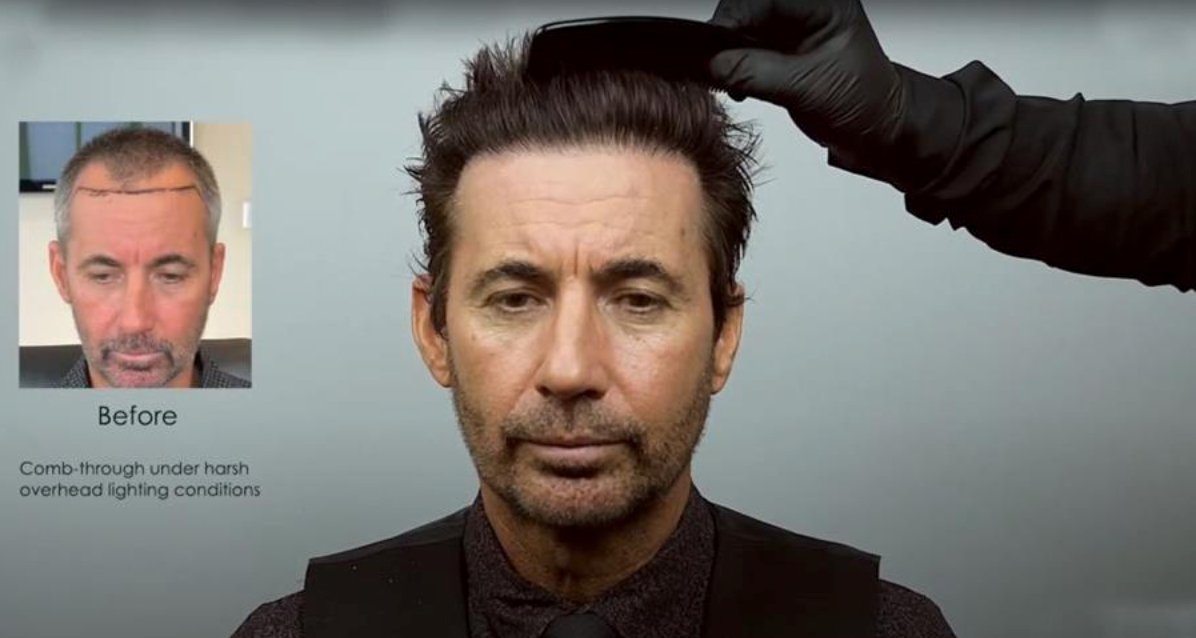What Is Hair Transplant Surgery: Your Ultimate Guide

Introduction
Most of us will experience hair loss or thinning hair at some point in our lives. It is a physiological change riddled with psychological implications. Despite the affects on quality of life, market education on available options continues to be poor. With a medley of solutions available for hair loss, opportunities for fuller locks are rampant.
Amongst those options are hair transplant surgery. This permanent solution can change your life in an instant. But before going through with the procedure it is important to understand the basics of this surgery. This guide will help you learn about hair transplantation along with current available techniques.
Whether you are looking at FUT or FUE, it is important to know the steps involved. This includes what to do before the surgery and how to take care of yourself afterward.
Understanding Hair Transplant Surgery
Hair transplant surgery simply moves healthy hair from parts of the scalp with good hair growth to areas that are bald. The main goal is to restore natural hair growth by transplanting healthy follicles. This surgical procedure is a good option for anyone looking for a long-term fix for baldness.
The Basics of Hair Transplantation
The back and side of the head, also known as the donor site, are usually healthy hair follicles that are not sensitive to hormonal influence. Hair restoration surgery involves taking follicles from the donor site and placing them in a strategic manner in the bald areas to give the perception of fuller hair.
Evolution of Hair Transplant Techniques
There has been substantial change in hair transplant techniques over the years. With each generation the restoration results have become better. The most recent techniques include Follicular Unit Transaction (FUT) and the more advanced, Follicular Unit Extraction (FUE). With FUE patients are able to obtain natural-looking results with less scarring and less recovery time. These new technologies afford patrons looking for hair transplant surgery more precise and effective options.

Types of Hair Transplant Procedures
Follicular Unit Transplantation (FUT)
FUT is a hair transplant method that involves taking a strip of tissue from the donor site at the back of the head. This strip is then split into individual follicular units. These units are used to fill in the balding areas of the scalp. Donor area is then closed off with stiches.
FUT usually requires longer recovery period than FUE given the increased invasiveness. Many providers favor FUT as it is the less technically challenging technique allowing providers to obtain more grafts in a single session.
Follicular Unit Extraction (FUE)
The most advanced hair transplant technique. Groups of hairs or grafts are extracted individually. Extraction on the graft level allows for smaller punctures and hence less scarring. There is NO long scar from the donor site, which has become synonymous with hair transplant surgery. FUE is the preferred methodology for both men and women given it produces minimal scarring, minimal recovery and the most natural results.
The Hair Transplant Process Explained
During a hair transplant, doctors take healthy hair follicles from the donor site, which is usually the back and sides of the head. They then place these follicles carefully into the areas of the scalp that are balding. This surgery is often done using local anesthesia, for the patient’s comfort. Individual grafts are transplanted with great care to optimize the success rate and achieve the best naturalness.
Pre-Surgery Preparations
It is very important to get ready before having any surgery and hair transplant is no exception. Before the procedure, your surgeon will look at your hair loss pattern, where the donor hair will come from, and your overall health. This helps to figure out if you are a good candidate for the surgery. You might need to stop taking certain medications and avoid smoking. Also, it is good to talk about any worries or questions during your consultation. This can help ensure everything goes well before the surgery. If you follow these steps, it can lead to a successful hair transplant outcome.
Step-by-Step Procedure Day
- Local anesthesia is given to keep you comfortable. The initial injections to administer anesthetics may be painful. Within 5-10 minutes you will begin feeling a sense of “helmet head” from numbness. Be very careful of your surroundings during this time.
- Next your doctor will begin taking grafts from the donor site one by one. The amount taken will be determined by the desired outcome, donor available and extent of balding.
- Once the grafts are obtained, they are bathed in solution. The solution varies from clinic to clinic. Its desired effect is to promote follicular growth.
- The design and incision phase involves developing a design of hair growth in the desired area with subsequent placement of incisions for future hair graft placement. These incisions meet certain densities requirements to achieve a natural look which varies depending on location, ethnicity and age.
- Finally, the follicles are placed one by one in to the incisions. This is a critical step as the untrained hand can damage the hair follicles if not careful. No phase of the procedure influences hair graft survival rate more than the implantation phase.

Post-Operative Care And Recovery
After hair transplant surgery, it is critical to take care of your scalp. Avoid heavy activities that can hurt the scalp or the new hair follicles. To optimize your investment it is critical to have a good hair care routine. In the long run this will ensure your results have staying power. Schedule regular checkups with your surgeon, this way you make sure your recovery is on track and you can get the best results.
Immediate After Care Measures
Do not touch or wash the transplanted area for at least 24 hours. This helps it heal properly. Make sure to gently clean the donor area as instructed by your doctor to avoid infection. When you go outside, wear a hat to protect your scalp from sunlight. Be careful to follow all the aftercare instructions from your surgeon for a successful recovery. Nutrition, Nutrition, Nutrition.

Long-Term Hair Care Post-Transplant
After receiving a hair transplant, taking care of your hair is very important to keep the results. To help your transplanted hair grow well you need a special hair care routine. This should include using gentle shampoos, not using too much heat when styling, keeping your scalp safe from the sun and drinking enough water to keep your scalp healthy. Visit with your surgeon periodically to check on your hair growth and talk about any concerns. By following these steps you can enjoy your thick hair for many years.
Potential Complications and Risks of Hair Transplant Surgery
Hair transplant surgery, like any other surgery, has some risks and possible problems. Infection, bleeding, scarring, or numbness in the areas that gave or received the hair are all potential complications. Sometimes, people might have inflammation or discomfort. There can also be rare allergic reactions to the medicines used. However, if you choose a good surgeon and carefully follow the care instructions after the surgery, it can help reduce these risks.
The Role of A Qualified and Experienced Surgeon In Reducing Risks
The more skilled the surgeon the better the outcomes and less likely the potential for complications. A surgeon's knowledge helps manage delicate tasks like FUE by leveraging an understanding of subjects like anatomy, facial dimensions, and pharmacology.
Professionals with experience know the details of donor site and scalp anatomy. Their familiarity with challenges, pitfalls, and opportunities allows them to more capably anticipate and address any common problems during surgery.
Trusted surgeons also support patients from the first consultations to post-operative care. This ensures a smooth and successful hair transplant experience.
Conclusion
Hair transplant surgery gives a lasting fix for people with hair loss. The process moves healthy hair follicles to areas that are bald. This action helps to spark new hair growth and leads to a natural look. It’s important to know the different methods and risks before choosing this treatment. Talking to a skilled surgeon can inform you of you candidacy for this surgery. In general, hair transplant surgery can greatly boost a person’s confidence and improve their life by bringing back a full head of hair.
Frequently Asked Questions
How Long Does Hair Transplant Surgery Take?
Depending on the desired outcome and amount of grafts needed the time it takes for a hair transplant varies. FUT generally takes less time, given it is technically easier to perform. Procedures can range from 4-14 hours in length.
Can Hair Transplant Surgery Leave Scars?
Hair transplant surgery can leave scars. However, new techniques have made these scars less noticeable. Both FUT and FUE procedures do cause some scarring. FUE scarring is minimally visible for natural-looking results.





Leave a comment